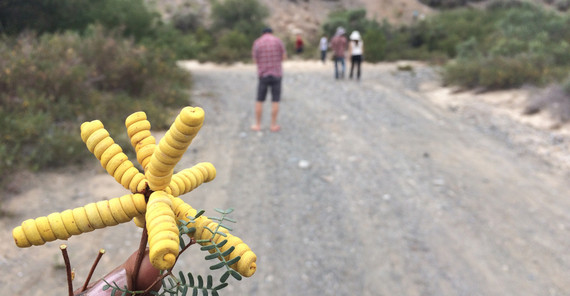We are driving from Rodeo to San Juan. No stops are planned for today but we enjoy the beautiful scenery and geology from the bus. We have to be in time for a „Show and Tell“ event in San Juan in the afternoon, where we present our state of research and progress of our projects via 12 minutes conference style presentations. Colleagues and supervisors from San Juan and Cordoba also join the event. We get feedback and discuss opportunities and ways of improving the analysis and design of our project. After we finished the stimulating discussions, we enjoy the rest of the evening in the cafés and restaurants of San Juan.
The next morning we have an early breakfast and leave the hotel by 8 am. We drive to the “Sierra Pie de Palo“ – our final geological stop. Here, we appreciate an old basement block, which is still uplifting along invisible fault zones bounding the block. We found no indication for that on the surface, although seismometers detect up to 35 earthquakes a day. Fortunately, we did not experience one of them because most of them are too small to be felt by humans. However, strong earthquakes in 1944 and 1977 in San Juan suggest that there must be tectonic ruptures somewhere at depth.
We are curious about some of the shrubs and native plants in the plains, which have small leaves and show desert like conditions, is about 1.5 m high, and produced a yellow spiral seedpod. No one, even the locals, could identify this interesting plant.
We drive back to Mendoza, where the fieldschool started and arrive at our Hotel in the afternoon. In the lobby we meet other colleagues affiliated to the „StRATEGy“ program, who came from Potsdam. The second part of the „Show and Tell“ event is a great success, too. We are more than happy that everything worked out and looking forward to our final „Azado“.
After a day of rest, some of the young researchers will go back in the field to collect more data for their projects. A small group continues further to the South in the Neuquén Basin and follows the challenges of the second part of the fieldschool.
Text: Lydia Olaka, Henry Wichura
Published online by: Agnetha Lang
Contact for the online editorial office: onlineredaktionuuni-potsdampde
Prior journal entry
Next journal entry
Show all journal entries

